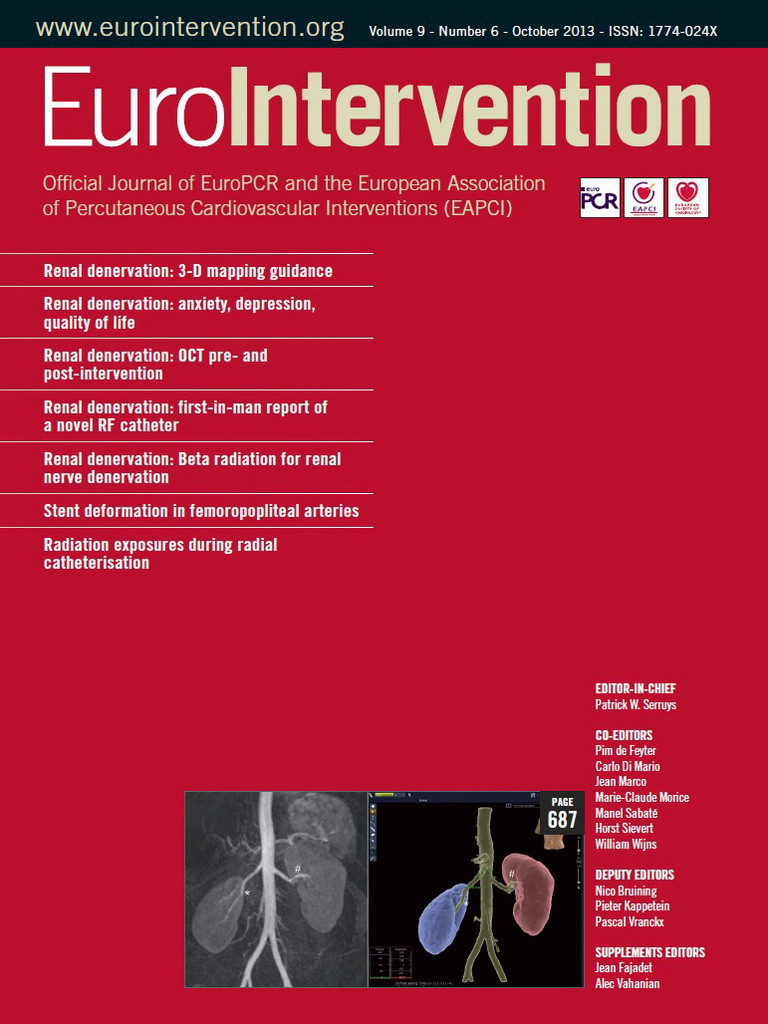NEWS
■Looking for a 12-month training in interventional cardiology and under 36? EAPCI Training & Research grants - 2014 programme open Apply today for an opportunity to receive 25,000€ to broaden your clinical and research skills in cardiology practices outside your own country.Application deadline: 15 January 2014.
■Cross-border aspects of primary angioplasty in EU countries To improve health outcomes for acute heart attack patients, the European Critical Care Foundation (ECCF) along with Stent for Life and other partners are moving closer to sharing their “Best Practices” between EU member states.
■ESC Congress 365: your free access to ESC Congress content all year long View thousands of webcasts, slides, abstracts and reports from the world’s leading cardiology congress – online, anytime, without subscription!
EAPCI Focus on the Working Group on Interventional Cardiology - AGIK (German Society of Cardiology)
An interview with the President, Christoph Naber
What does the EAPCI membership mean for a national society?
Due to the large size of Germany, for years we tended to be insular and introspective, too occupied with our own affairs while, at the same time, seeing that the European interventionalist field was moving on without us. Of course some German interventionalists were involved in the old Working Group that became the EAPCI, but they did so generally as individuals. Then we realised that by combining as a united front under the auspices of the AGIK we had a significant role to play in the EAPCI, especially on developmental and educational levels.
What are the current issues related to your national society?
From a clinical and research point of view, we have developed major national registries for PCI, TAVI and mitral therapies that have been presented and published in major meetings and journals. We look forward to more studies in the future. The development of our STEMI networks is progressing very well, with more than 95% of patients having access to primary PCI centres.
In our daily work we have established excellent educational foundations. We adhere to the EAPCI curriculum with some local “add-ons”. This autumn we will be starting our own accreditation system –although it will be optional– and we believe this is a positive step towards guaranteeing competence and ensuring quality within our speciality.
With respect to clinical, interventional Fellows, in the past our medical and educational culture called for the individual to stay in one place, one centre, learning from the experts who were there. Today, however, mirroring the increased mobility within Europe, we have started to see more International Fellows coming to Germany to gain experience –despite the quite difficult German language requirements. On the other hand, we are seeing Germans going to other countries to seek experience. This is one of the most important aspects that has become of special interest to us at AGIK.
Our group is one of the largest within the EAPCI, but could certainly be larger, as only 254 of our 650 working group members are also EAPCI members. We believe that increasing our membership within the EAPCI will help us in furthering the EAPCI as a professional body. Our general cardiology society meeting has more than 8,000 attendees annually.
Like our European colleagues, we face many challenges particularly due to the current recession. Ironically, the most difficult thing at the moment is dealing with an explosion in new cathlabs across Germany. Whilst many welcome this expansion, it does have an impact on funding, since this remains at the same level despite the increase in the number of cathlabs.

Christoph Naber, President of the Working Group on Interventional Cardiology - AGIK (German Society of Cardiology)
![]()
President: Christoph Naber
Past President: Michael Haude
Contact details: [email protected]
Website: http://www.agikintervention.de/
Upcoming annual meeting: DGK/AGIK, Mannheim, Germany, 23-26 April, 2014
Founded: 1993
Members: 650 interventionalists
EAPCI members: 254

